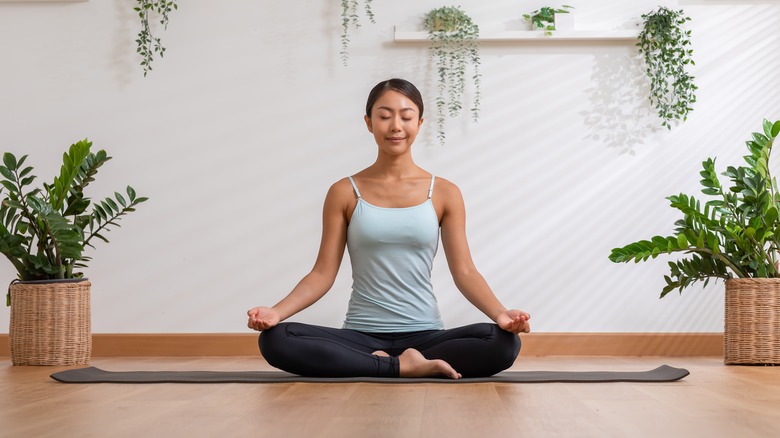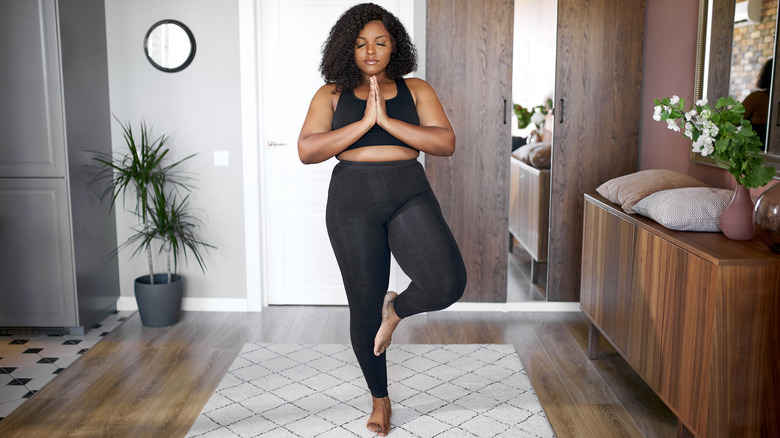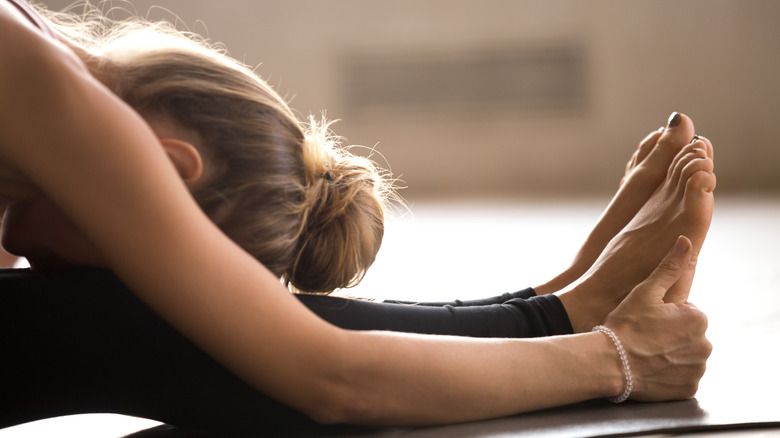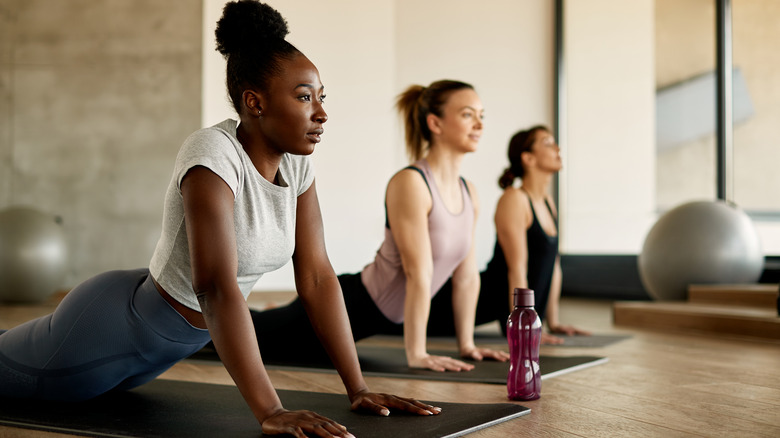Should You Be Doing Yoga Every Day?
Just about anyone can become a yogi, from the namaste newbies to the pro plankers. And the health benefits of starting a regular yoga practice make the time spent on the mat well worth it. According to Johns Hopkins Medicine, yoga can relieve pain, boost heart health, lower stress, and improve physical strength and flexibility.
Unlike many other types of workouts, yoga is easygoing and low-impact enough to fit almost anywhere in your schedule, whether that be right after waking up, during your lunch break, or shortly before hitting the sack. In other words, yoga is arguably one of the most accessible ways to add movement and exercise to your lifestyle.
Yoga is so easy to do, you might consider incorporating it into your daily routine. But is it possible to spend too much time stretching and posing through yoga flows? Here's how often you should actually be rolling out your mat.
Doing yoga every day is okay — usually
If you're new to yoga, your body may need time to warm up before you start doing daily flows. That's why Body & Brain, a chain of yoga and health studios, suggests beginners stick to only two sessions a week. Experienced yogis, however, can generally practice once or even twice a day.
Janie Gianotsos, a certified yoga instructor, agrees, telling Bustle that it's best to do 30 to 60 minutes of the ancient Indian exercise every day. "My own practice is daily yoga nidra, or meditation, for 15 to 30 minutes and at least 15 to 30 minutes of asana [another word for yoga poses]," she revealed. "If I have time for more, I like to practice asana for a full hour."
However, this routine can be tweaked based on your personal goals. "Yoga for a calmer mind can be done daily and as often as you need," Kajuan Douglas, a yoga teacher, explained to Well+Good. Douglas also noted that improving balance requires daily practice. If you're focused on becoming more flexible or building muscles, doing challenging routines a few times a week is enough to get the job done, without straining your body.
Benefits and drawbacks of daily yoga
The advantages of doing yoga occasionally are, unsurprisingly, amplified when you make time for Downward Dog on a daily basis. For example, the mood boost you experience after hitting up one class or turning on a yoga video can become a regular thing when you practice daily, as Kajuan Douglas told Well+Good. "Besides becoming stronger and more flexible, you will start to change your outlook on life. Whether you believe it spiritual, mental, or emotional, daily yoga can help instill patterns or routines for self care," he shared. Fitness instructor Nicole Glor echoes this, telling Prevention, "A consistent practice will lift the spirit, relax the mind, and strengthen and stretch the body among other benefits."
Even if daily yoga may be your goal, there are times when it's best to skip a day or two. You may be overdoing it if yoga is negatively interfering with other areas of your life (such as preventing you from sleeping or spending time with loved ones), you're juggling other workouts at the same time, or your body is struggling to keep up with flows and poses (per Everyday Health). Though yoga can be healthy, so is rest. Take a time-out when needed to avoid muscle strains and other injuries.
How to make time on your mat every day
Committing to a daily practice can be harder than just slipping on your yoga pants every morning, especially when just starting out. Finding the time, energy, and motivation to hit the mat takes practice, as well as a few practical tips. Ivey DeJesus, a certified yoga instructor, wrote in an article for Yoga Basics that it helps to start with short sessions done at the same time each day. She also notes how important it is to find a teacher and style of yoga that works for you. That way, you'll be more motivated to keep going day after day.
Depending on what inspires you, that could require signing up for classes at a local studio. However, a daily yoga practice can be done in the comfort of your home too. To start your at-home yoga journey, yogi Esther Ekhart suggests finding a designated spot in your home to place your mat each day — no other equipment is needed. Then, choose the type of movements and stretches that fit your body's needs on that particular day.
Finally, be flexible (no pun intended) when it comes to yoga. If a daily habit is hard to keep, commit to three days a week instead, Ekhart says. She explains, "A feeling of failure usually just makes you skip practices even more. So, be honest, set realistic goals, and do what you can. A 10 minute yoga practice is still a practice and definitely counts."



